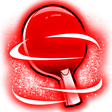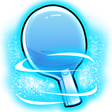Table friction standard
Equipment
 Chris Brown Asked 3 years ago
Chris Brown Asked 3 years ago
Hi Alois, is there any measurable standard for friction/grip of the table surface. At club level I see a fair bit of difference from table to table (venue to venue) that impacts spin effect off the table (degree of kick). I just wonder if there is any "rule" for standardisation or not.
 Alois Rosario Answered 3 years ago
Alois Rosario Answered 3 years ago
Hi Chris,
Good question and one I had to dig around a bit to find the answer. They have an advisory Coefficent of friction but not mandatory. I think there is quite a variation in the tables at the moment but also know that within a short period of time players get used to the table.
Take a look at the link to the document from the ITTF. The relevant section is 4.8. https://documentstore.ittf.com/documents/equipments_site_docs/T1_Table_BoD_2016_v2.pdf
For those technically minded here is the transcript.
4.8. Friction of the playing surface
The changes of both spin and trajectory when a table tennis ball bounces are governed by the coefficient of friction (CoF) between the ball and the table; the part contributed by the table to the CoF is almost exclusively a property of the surface finish. We formerly specified the CoF of the playing surface, but have subsequently learned that there are unidentified variables that reduce the reproducibility of the method. The following is therefore advisory, not mandatory:
The dynamic CoF between the playing surface and that of any ITTF-approved ball should not be greater than 0.6 6 and not be less than ... (this limit will be set during 2016, and submitted to BoD in 2017). The CoF should be essentially the same regardless of the direction in which it is measured.
A simple practical method of determining coefficient of friction uses a triangular raft or sled supported on three balls, about 2 cm apart, glued to a piece of wood or other substance that gives a total weight of about 100g. The maximum angle between the playing surface and the horizontal when the sled will not continue to slip is measured. The tangent of this angle is the CoF.
Alternatively the 100g sled described above may be pulled over the horizontal table at a speed of 300 mm/min, and the pulling force is measured. The dynamic CoF is pulling force divided by the weight of the sled, both in Newtons. The average of five measurements should be taken. Care should be taken that any device used for determining the pulling force should be as free from friction as possible.
It should be noted that not all balls have the same frictional properties; The CoF should be measured according to a standardized procedure including balls used and prior cleaning of balls and tables.
Recommended Video
Thoughts on this question
Become a free member to post a comment about this question.
Thanks Alois,
Thanks for your comprehensive response (as always!).
I don't think I will be building sleds and testing them on sloping tables or tugging them with spring balances any day soon!
It is interesting to note that they have moved away from mandatory CoF towards an advisory range and that even that is not fully delimited. Anyway I suspect I have far more aspects to be managed that are within my own control than worry unduly about this given the variance and complexity.
Thankyou
Chris
No problems Chris.